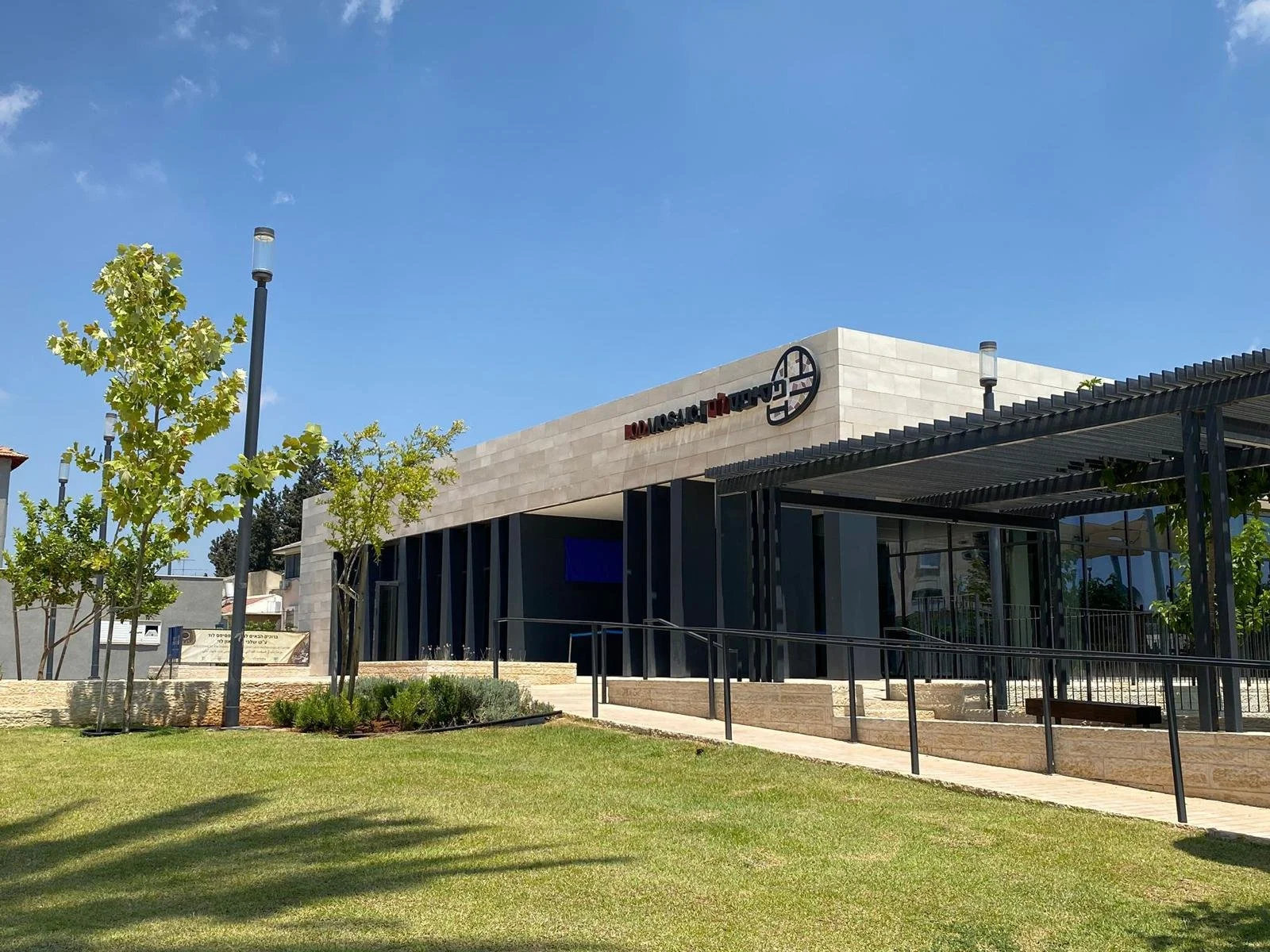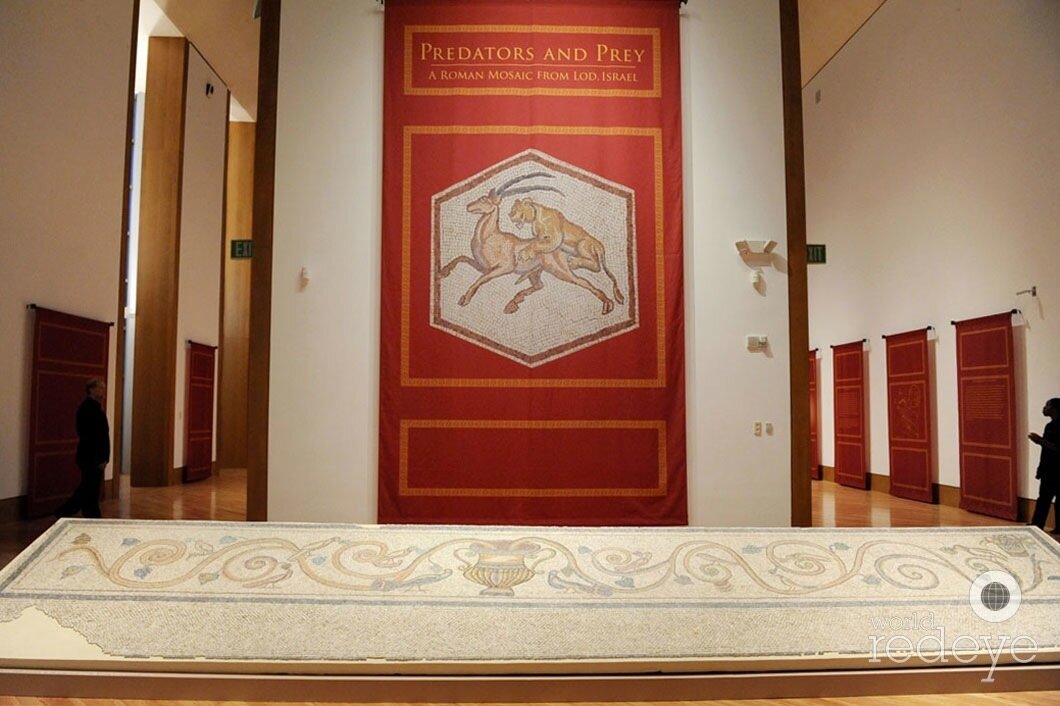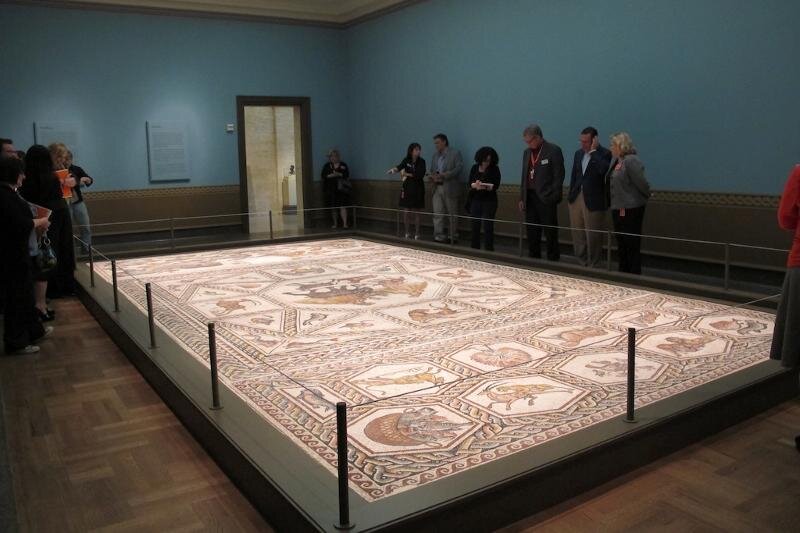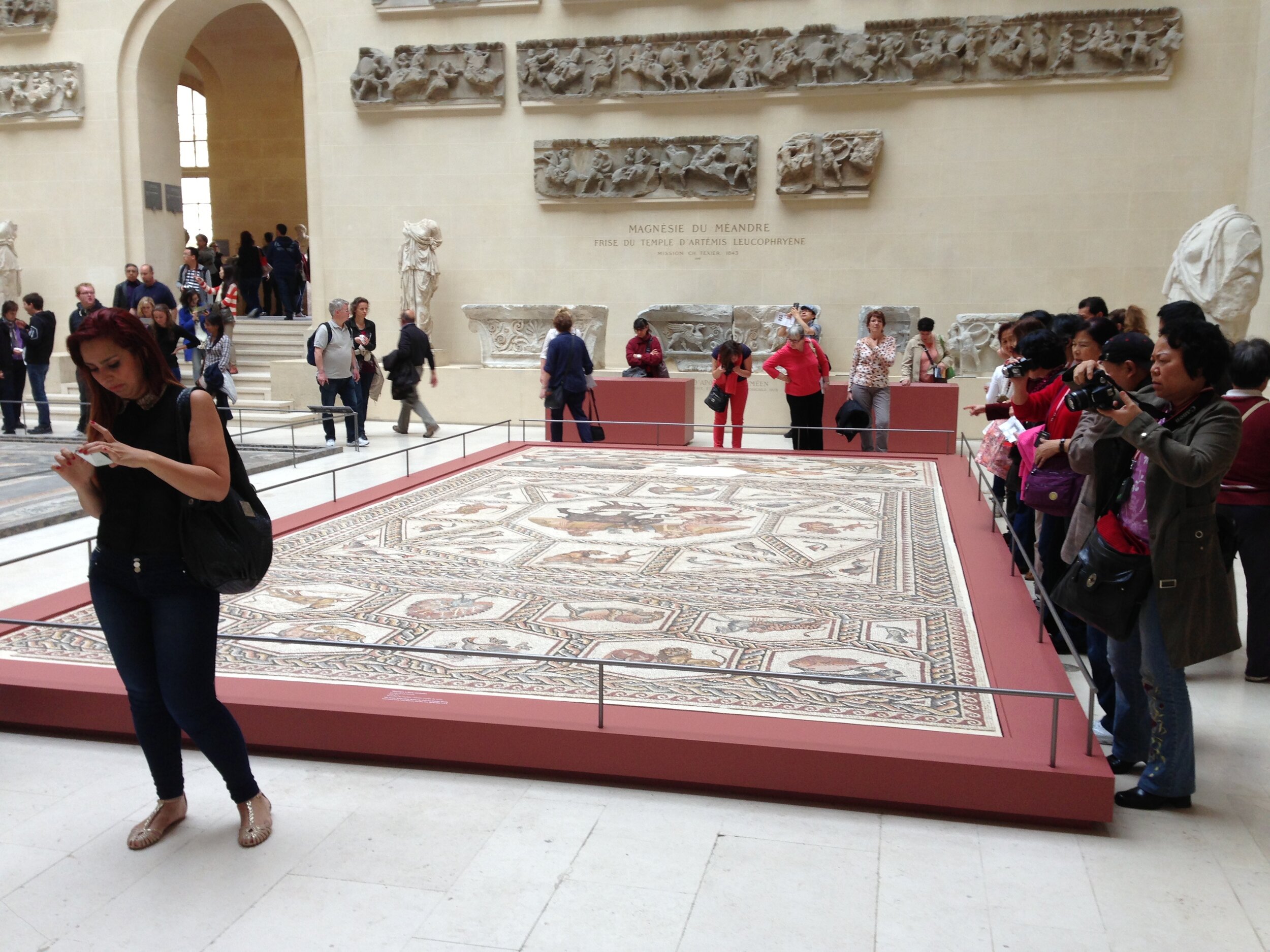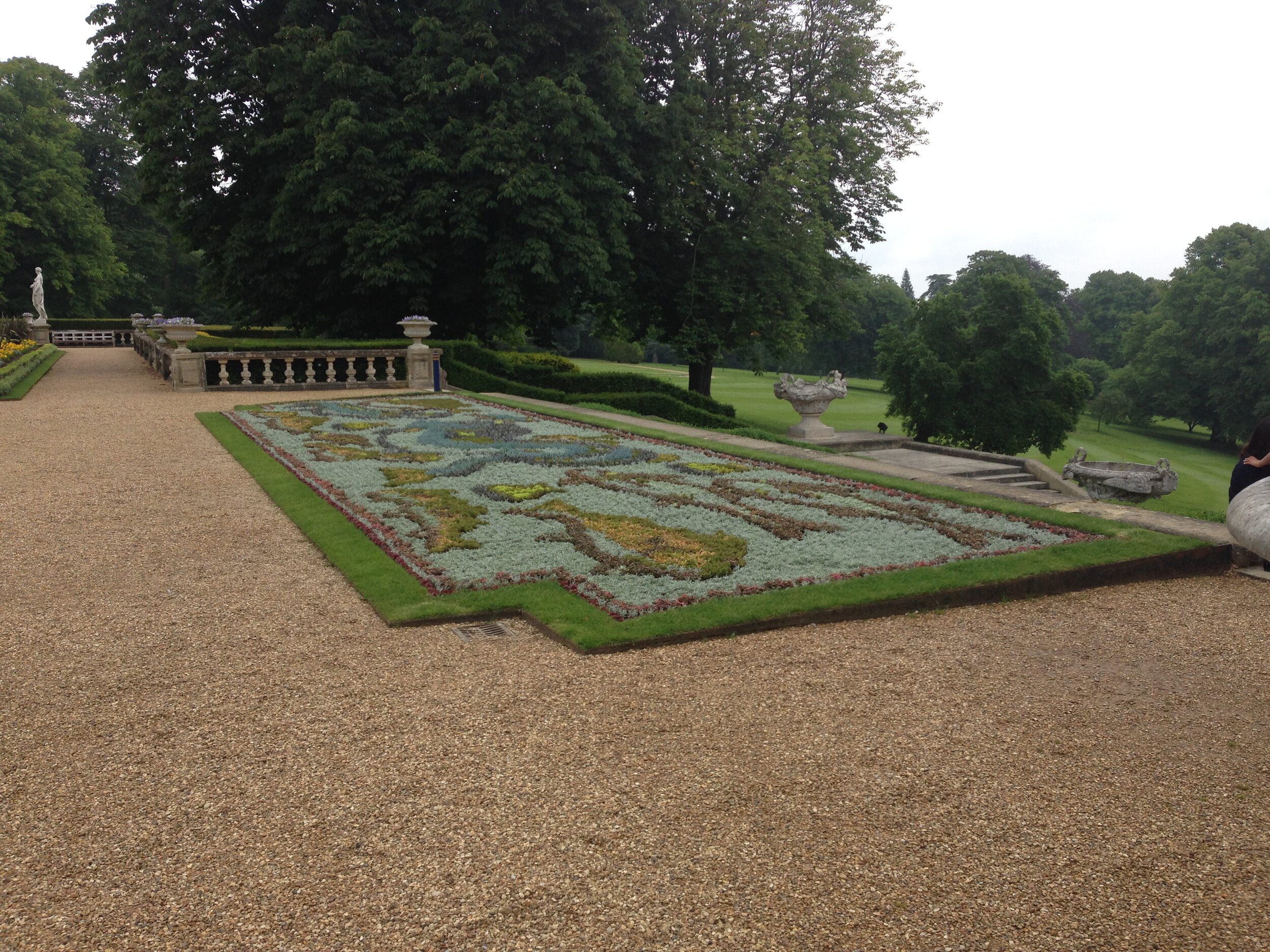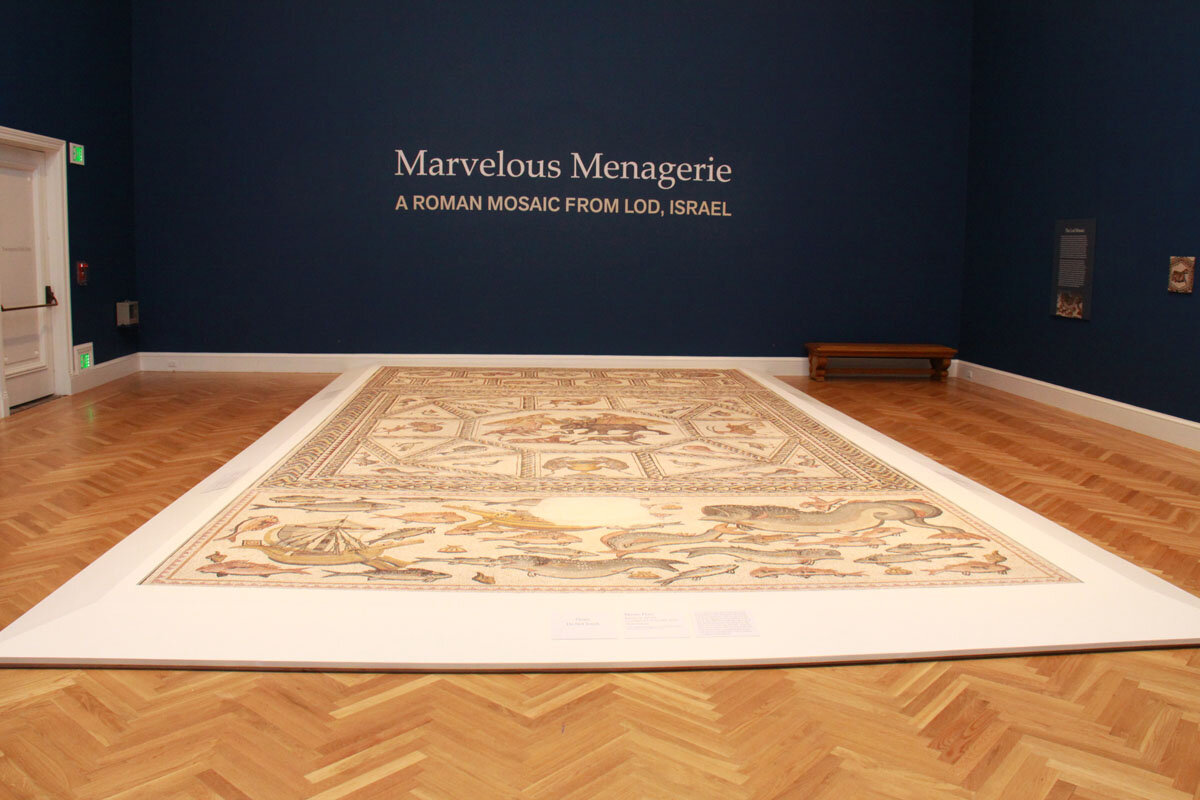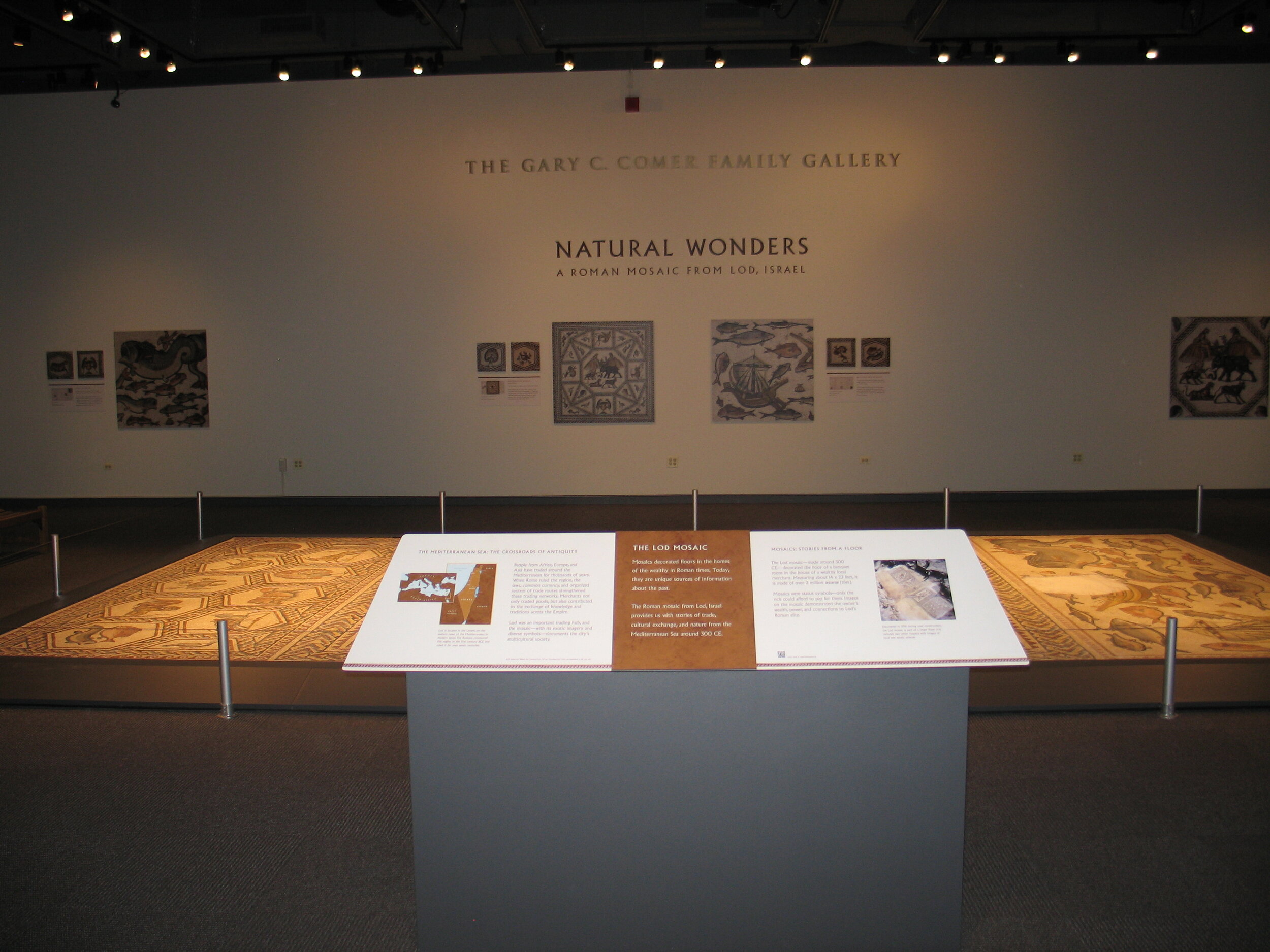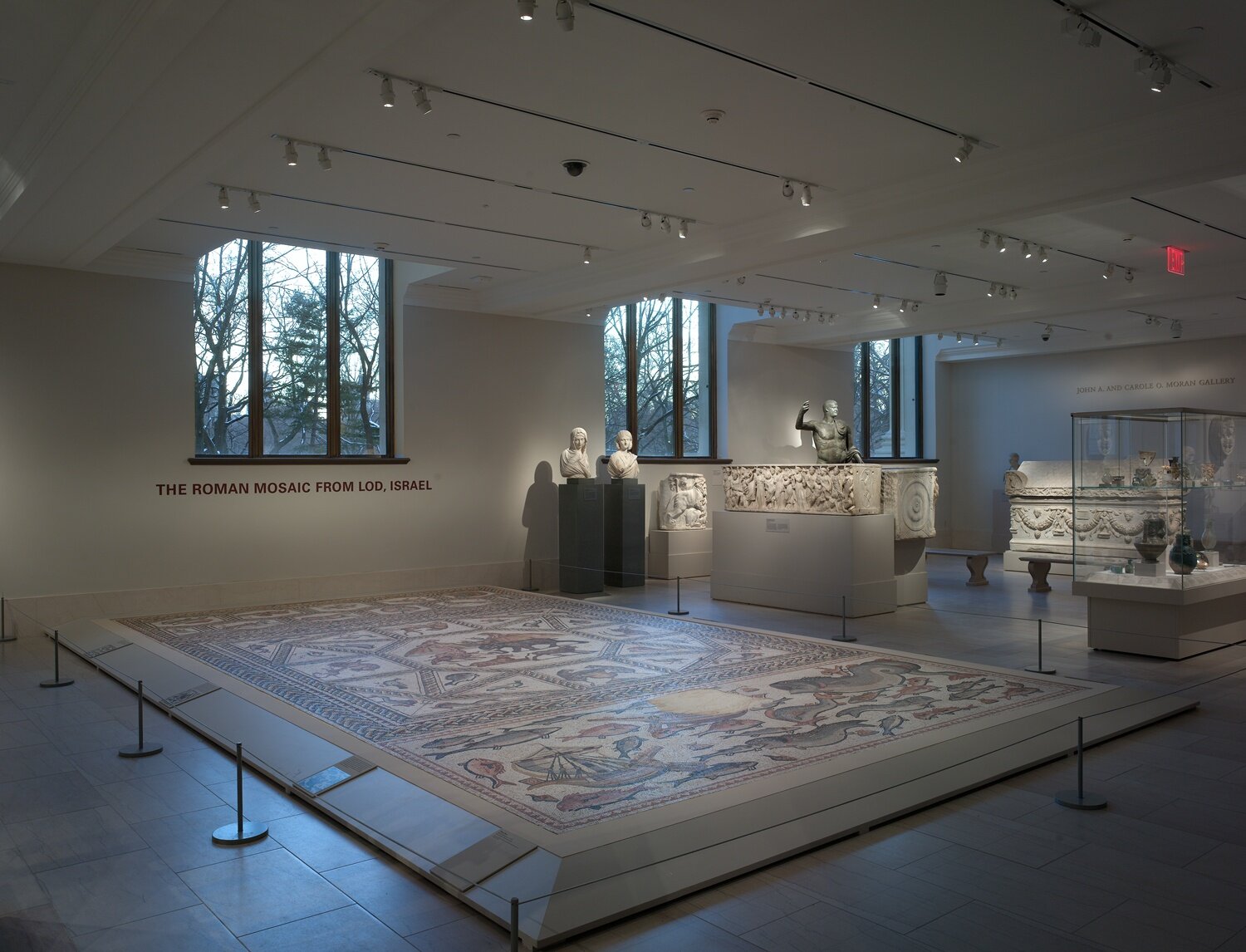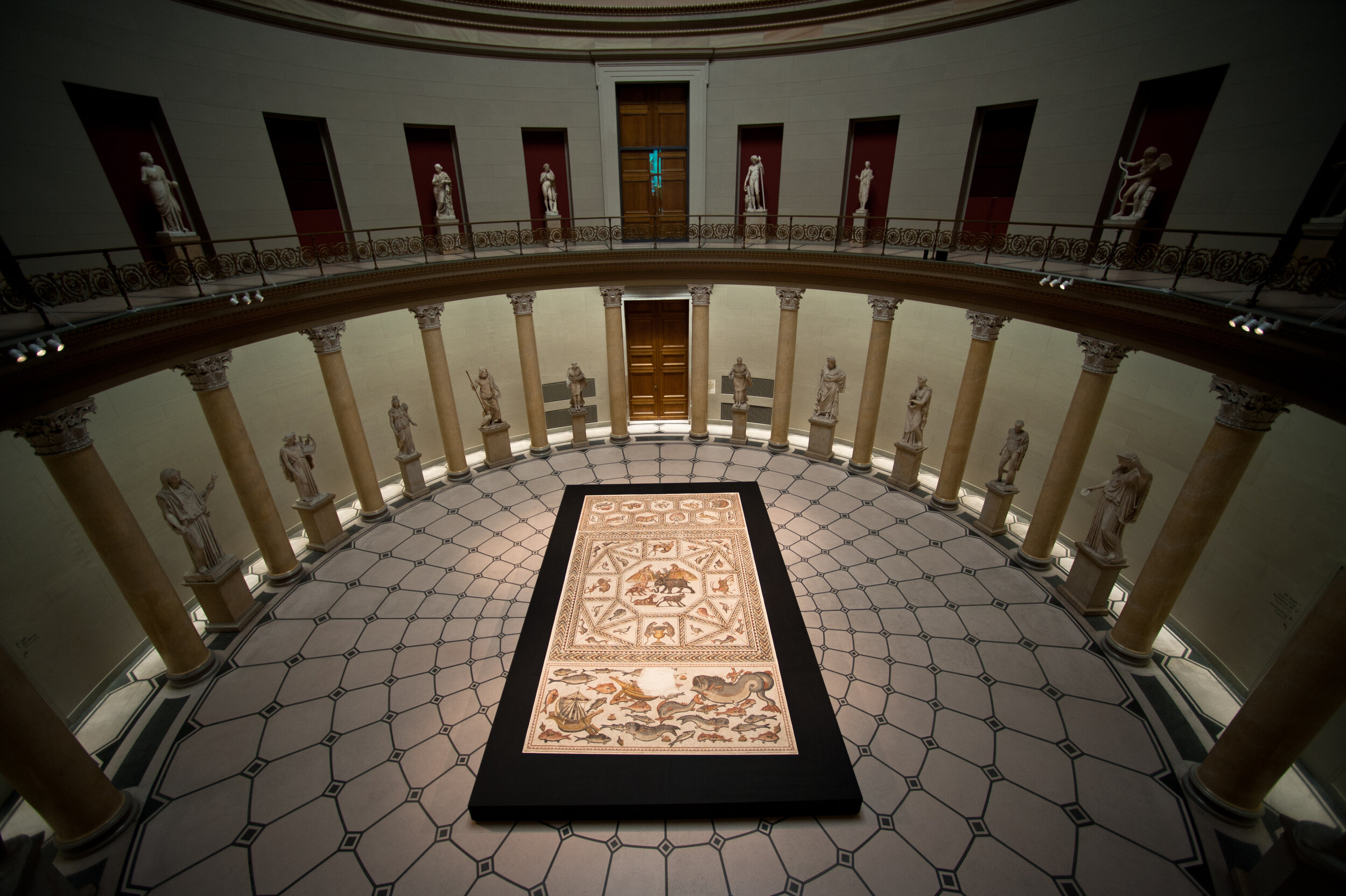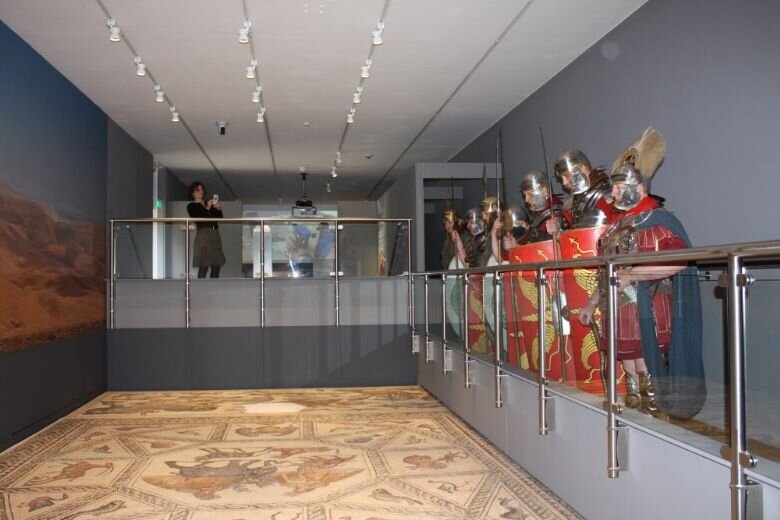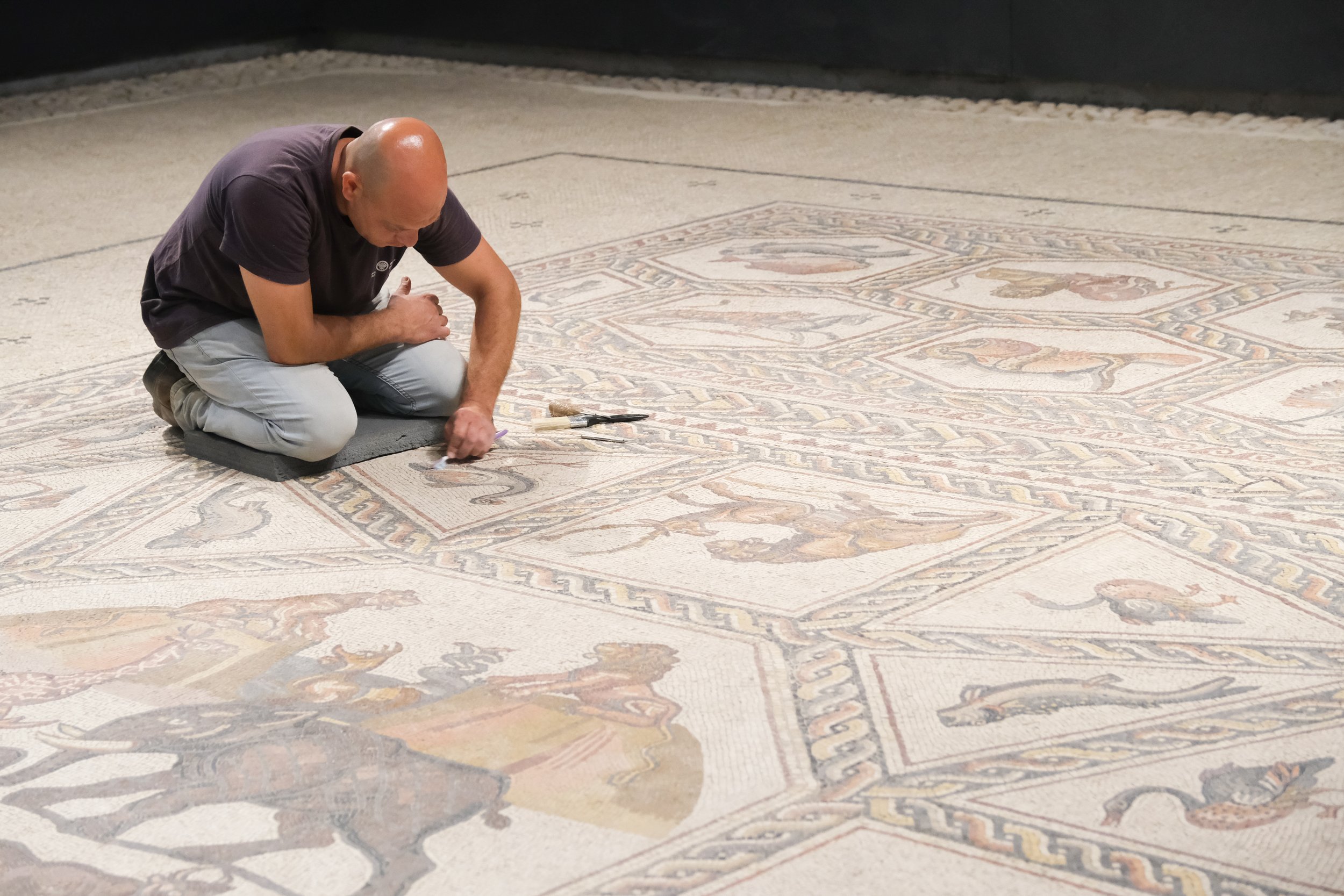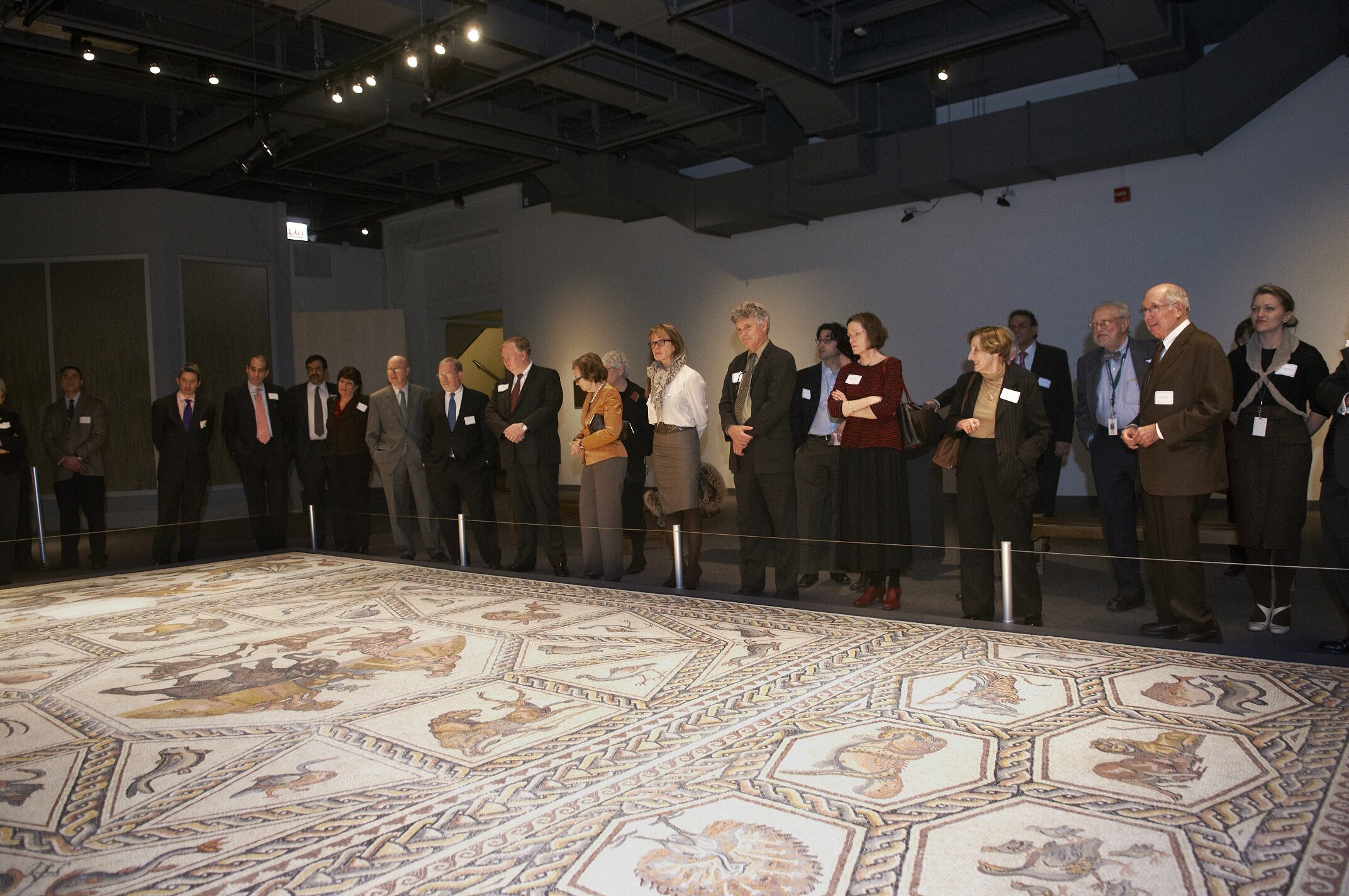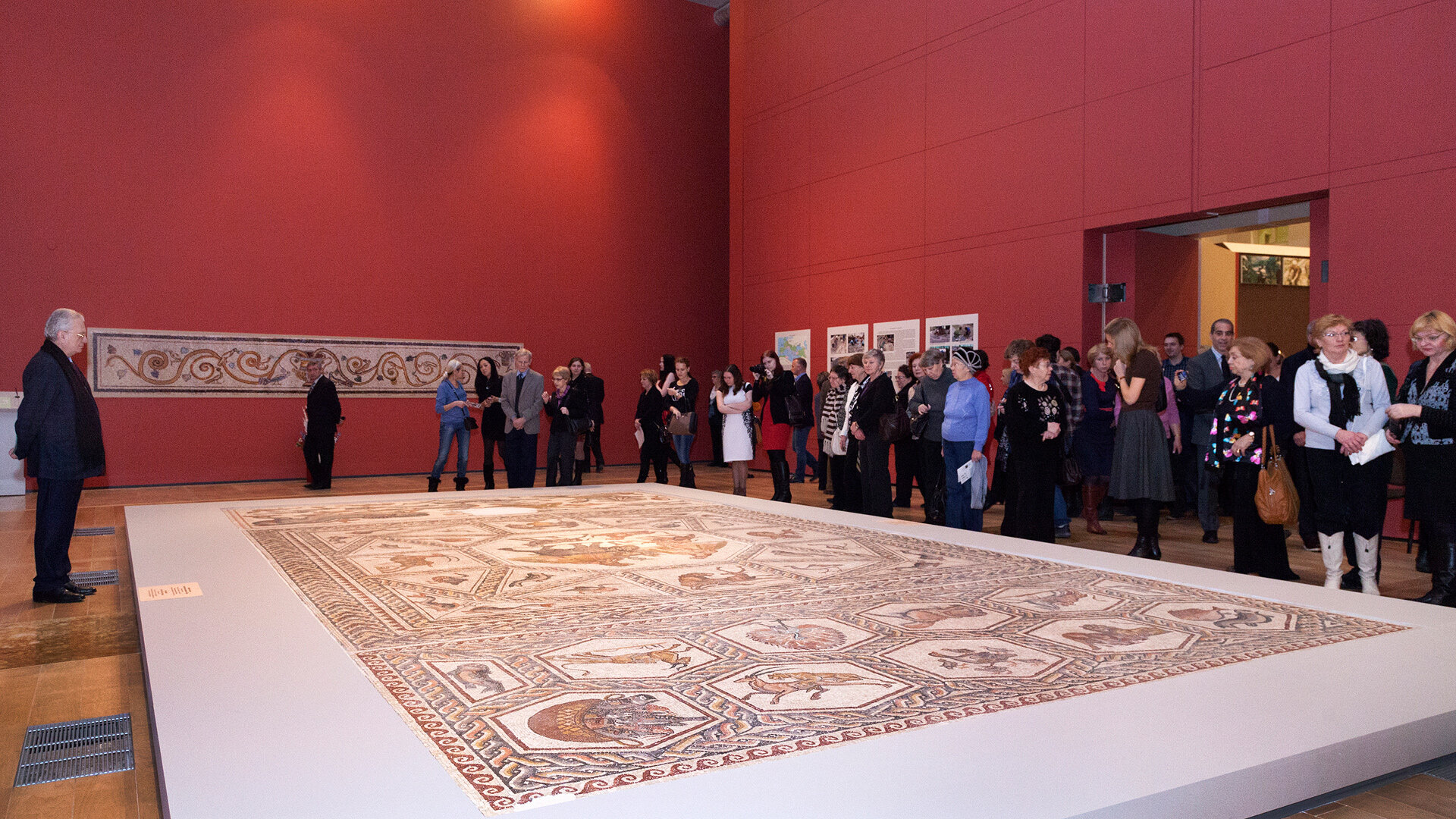One of the finest and largest mosaic floors ever found in Israel, the Lod mosaic is an archaeological gem consisting of panels with detailed images of mammals, birds, fish, various plants and ancient ships.
The mosaic was uncovered in the Israeli town of Lod, which according to an ancient legend was the birthplace of Saint George. Dating from the 3rd century AD, the mosaic is also particularly interesting because it is so well preserved. Immediately after the discovery, the mosaic was reburied to protected it from the elements which threatened its state of conservation. It was then uncovered again in 2009 and displayed to the public for one weekend; over 30,000 visitors seized the opportunity to admire the mosaic. Funded by the Leon Levy Foundation and Shelby White, chairman of the Friends of the Israel Antiquities Authority, work began the same year to create a permanent home for the mosaic.
The establishment of the center to present the mosaics— the most spectacular exposed in Israel— is made possible through collaboration of the Leon Levy Foundation and Shelby White, the municipality of Lod and the Israel Antiquities Authority.
During the preparation for the Center, the Lod mosaic set off on an international tour and has been displayed in major museums around the world, including the Metropolitan Museum of Art, New York; the Louvre, Paris; the Altes Museum, Berlin; Waddesdon Manor, United Kingdom; the Hermitage, St Petersburg; the Legion of Honor, Fine Arts Museums of San Francisco; Columbus Museum of Art, Columbus; University of Pennsylvania Museum of Archaeology, Philadelphia; the Field Museum, Chicago; Fondazione Cini, Venice and the Patricia and Phillip Frost Art Museum, Miami.
The mosaic was accidently found in 1996 by Miriam Avisar from the Israel Antiquities Authority (IAA), as part of a dig aimed to save archaeological finds in a square on HeKhalutz St. in Lod. The mosaic was dated at the Roman period (end of the 3rd century CE / beginning of the 4th century CE). Without a budget for preservation and conservation to display the site, the mosaic was covered at the end of the dig, until 2009 when a generous donation by the Leon Levy Foundation and Shelby White allowed the mosaic to be re-exposed and removed for conservation, and subsequently returned to its original site at the Shelby White and Leon Levy Lod Mosaic Archaeology Center. This is a unique project to display a world class find in-situ, within a modern complex relating to the villa where this mosaic was found.
The mosaic, extraordinary in its quality, its depicted subject matters and preservation, actually served as the floor of a living room villa, which was part of a wealthy housing complex, erected in Lod during the Byzantine period. It is 57 ft. long and 30 ft. wide, and is composed of colorful mosaic segments featuring mammals, birds, fish, flora and even sailing vessels which are depicted in great detail. The design is influenced by north African mosaics. It is interesting to note that unlike other mosaics found from that period, there are no human figures. South of the main mosaic, a second colorful mosaic was discovered, and it will be incorporated in the museum as well.
The mosaic is now displayed to the public and to Lod residents with the goal of providing visitors access to view and experience the mosaic from various angles and to be impressed by its unique beauty. The center connects residents to the important cultural heritage of their city, the mosaic representing their cultural diversity.
The site is a central vehicle for the promotion of Lod tourism: the mosaic site is situated on the north-eastern part of Lod, adjacent to the Ginaton junction. This junction has easy access to Ben Gurion International Airport and to two main arteries in Israel: route no. 1 connecting Tel Aviv and Jerusalem, and route no. 6 connecting the northern part of Israel to the south. Its location makes approach simple from all directions and will enable access to touristic itineraries which will include a few historic sites in Lod.
Lod Mayor, Yair Ravivo LLB: "After 21 years we have reached this significant day when we are laying the cornerstone for the Shelby White and Leon Levy Lod Mosaic Archaeological Center, a source for local pride and connection to Lod's long history - the oldest in the world! Very so on, our dream in the city of mosaic of cultures will materialize when one of the most important museums will be open, and will place Lod on the world tourism map. We will provide for visitors from Israel and from around the world to view this incredible treasure here in Lod. The new center will provide a dignified front and an impressive gate to the city, and will connect the visitors to a touristic route which will include marvelous historic sites which we are preserving within the development of the old city, to include Khan El-Khalil, the arches house, the famous local market and the Tana'im museum as well as the new municipality complex which we are building for our residents. On behalf of the citizens of Lod I am delighted to give my thanks to our dear donor, Mrs. Shelby White, and to the Director of the Israel Antiquities Authority, Mr. Israel Hasson, and also to the entire professional team, for the partnership. Old Lod is rejuvenated!"
Israel Hasson, Yair Revivo and Shelby White (L-R), laying the cornerstone.
“The Lod Museum will be a dream come true, that began when my husband Leon Levy and I first saw the magnificent mosaic twenty years ago. This could not have happened without the strong support of the Lod community and the Israel Antiquities Authority”
Make a Gift
Your gift allows the IAA to continue discovering, preserving, and sharing the Land of Israel's archaeological heritage.

